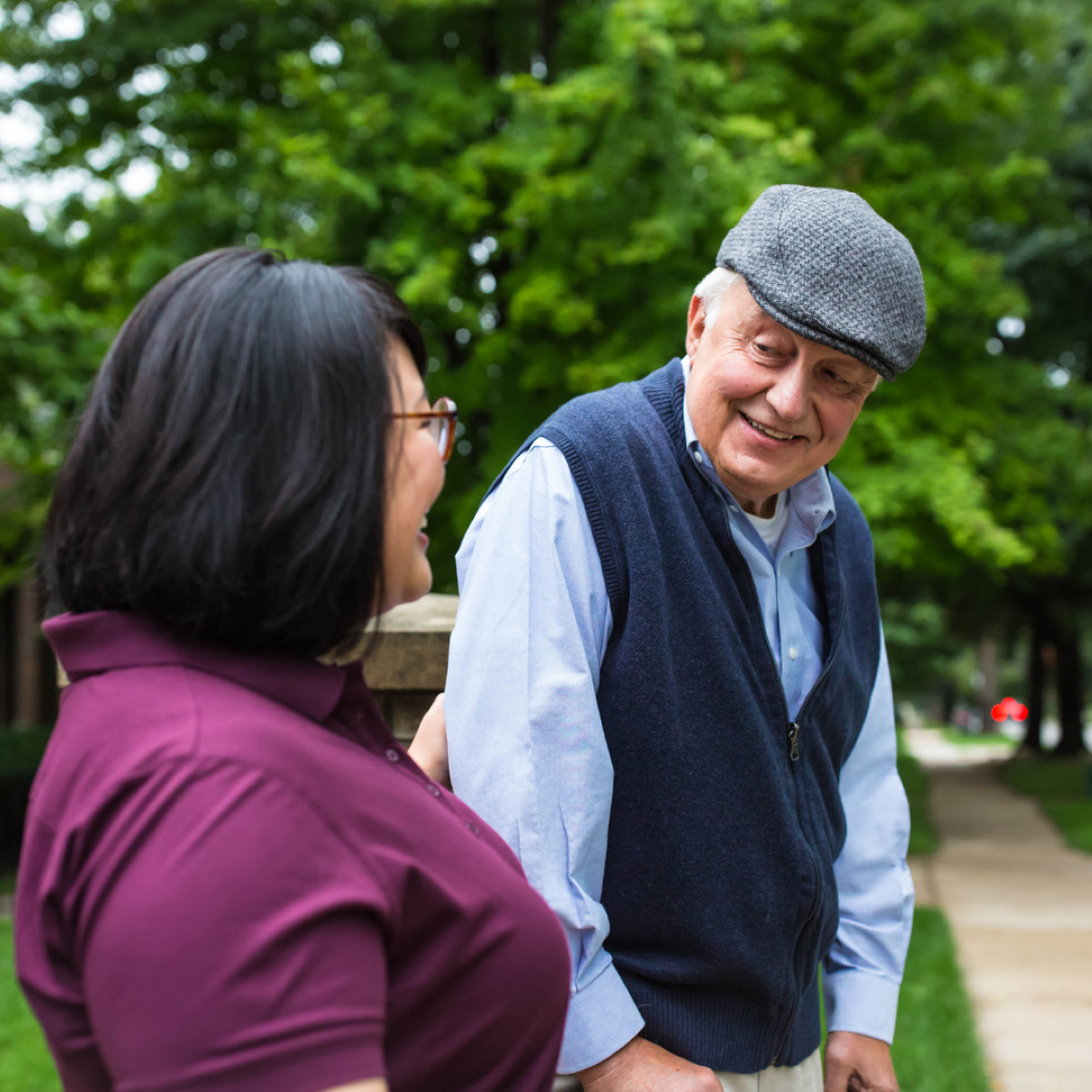When you think about your senior dad or mom at home alone, falls are likely among your biggest fears for their safety. After all, a fall can result in serious injury, such as a broken hip, from which an older adult may have difficulty recovering.
Fortunately, seniors can improve their leg and muscle strength--and, by extension, their balance and flexibility--by doing a series of easy movement activities several times a week right in their own home.
These are simple movement activities for seniors to improve lower body strength and balance. Each short video in the series includes a demonstration of the exercise, plus specific instructions on how caregivers should position themselves to catch a senior who becomes off-balance.
To perform these exercises, seniors will need a pair of stable shoes (such as athletic shoes) and a sturdy chair. Keep in mind seniors should never engage in exercises like the ones described here without close supervision and their doctor’s permission.
Assessment
Before beginning, you should perform a fall risk assessment that includes evaluating a senior’s baseline balance and strength level. The first three videos in the series demonstrate activities to assess those balance and strength attributes:
• A brief overview
• The chair stands assessment
• The 8-foot up-and-go.
The tutorials include instructions on how to document the assessment results for the senior’s primary care provider. Every senior should receive his or her doctor’s permission to participate in these strengthening exercises before starting.
What it does: Strengthens muscles on the side of the hip and leg that contribute to stability while standing and walking.
How to do it: To perform this exercise, a senior should stand behind a sturdy chair, facing it, with her hands resting on the chair back. Keeping her feet shoulder width apart, with knees, hips and shoulders aligned, the senior should shift her weight slightly to one leg while flexing the opposite foot and lifting the opposite leg out to the side. Perform the exercise for five to 15 repetitions per leg.
What it does: Strengthens muscles around the belly button to help seniors better maintain their center of gravity.
How to do it: To perform this exercise, a senior should stand behind a sturdy chair with hands resting lightly on the chair back. With feet shoulder width apart and knees slightly bent, the senior should shift his weight fully onto one leg, hold for two seconds and then, in a fluid motion, shift his weight to the other leg.
Performing this exercise correctly will result in a controlled swaying motion from side to side. Perform five repetitions on each side, for a total of 10 weight shifts to start with, and then build up to 15 or 20 repetitions.
What it does: Improves muscle tone and strength in the calf muscles, which perform a key function in walking with stability.
How to do it: With both feet hip-width apart and hands resting on the chair back, the senior should slowly shift her weight onto her heels while lifting the toes, then gradually roll onto the toes while lifting the heels. The senior should start by repeating this sequence for five repetitions, building up to 15 repetitions.
What it does: Improves strength in the core and hip muscles.
How to do it: For this exercise, the senior should stand beside the back of his chair, with one hand placed on the chair back. Standing tall and looking straight ahead, the senior should shift his weight onto one leg, and then carefully raise the other knee in front of him until his upper thigh is parallel with the floor. Hold this position for 30 seconds, then repeat on the other side. When a senior is just beginning an exercise program, he may not be able to hold his leg up for a full 30 seconds. In this case, work to gradually increase the length of time over several sessions.
What it does: Promotes balance while walking.
How to do it: Just as it sounds, this exercise involves slowly walking while placing the heel of one foot directly in front of the toe of the opposite foot. Be sure the senior stands tall, with good posture, and looks out ahead of herself. It is important for a caregiver to position herself very close to the senior and walk alongside, with one hand in front of the senior and the other hand behind. This way, you can quickly catch the senior if she loses her balance.
What it does: Improves the strength of calf muscles and works to improve coordination.
How to do it: The senior should start with feet hip-width apart, then rise onto his toes and take normal strides on the balls of the feet, keeping the heels raised throughout. Take between five and 15 steps in this manner. During this exercise, caregivers should maintain a close supervisory role by walking alongside the senior with one hand in front and one hand behind to help them if they lose their balance.
As you can see, senior exercise does not need to be intimidating or vigorous to produce benefits. The exercises outlined here were developed by experts specifically to help seniors reduce their fall risk by improving muscle tone and balance. When you encourage your senior clients to spend just a few minutes each day performing these movement activities, you may be helping to keep them safe from falls.
Learn more about preventing senior falls.



